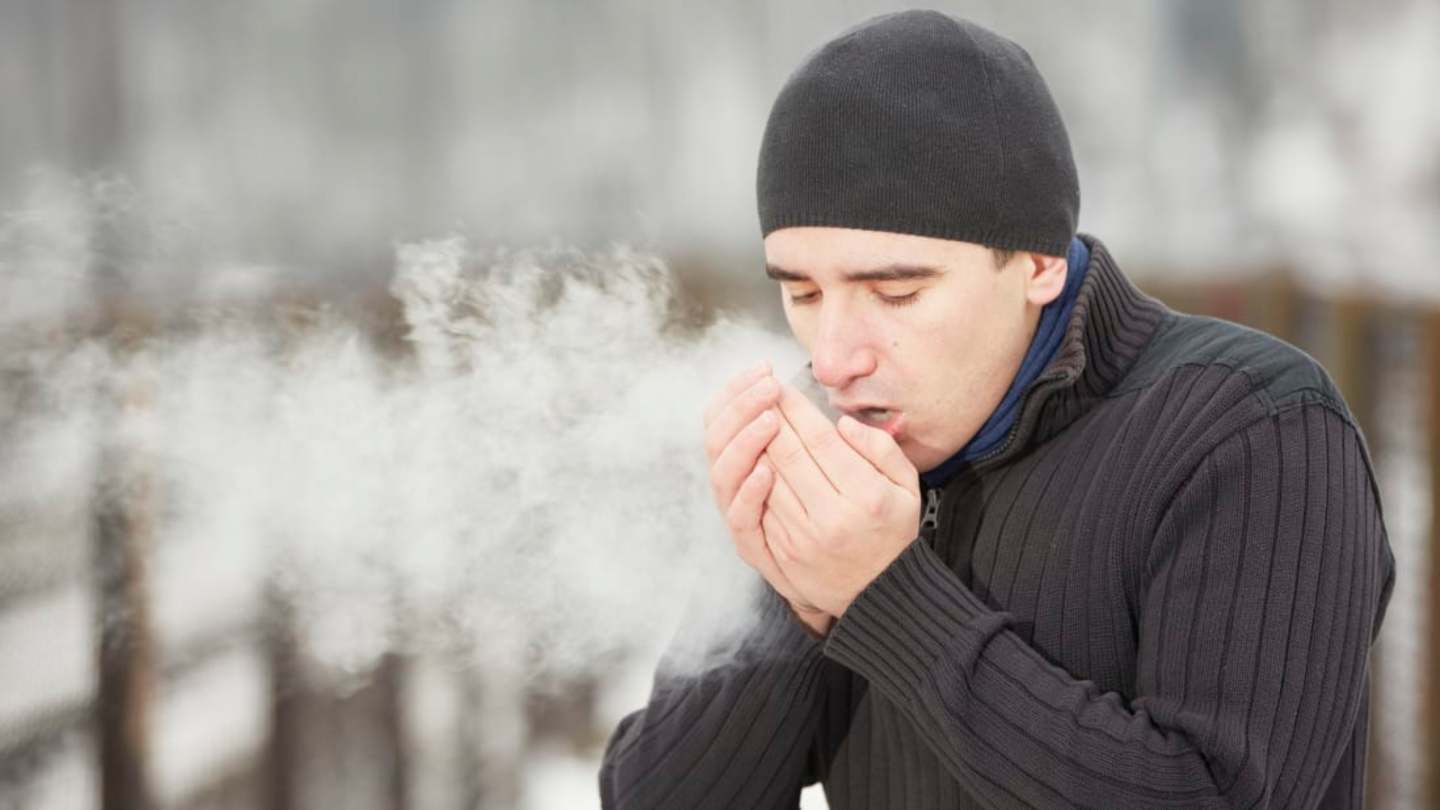Have you ever noticed how, on a chilly day, you can see your breath as a little cloud? It’s a common sight, but the science behind it is Quite Fascinating. We’re all familiar with the feeling of warm air leaving our lungs, but what makes it visible under certain conditions? This phenomenon is all about condensation, a process that’s influenced by both temperature and humidity.
Essentially, When You Exhale, you’re releasing water vapor along with Carbon Dioxide. This warm, moist air is saturated with water molecules. When this warm, moist air meets the colder surrounding air, the water vapor quickly cools down. This cooling reduces the air’s Capacity To Hold Water Vapor, causing it to condense into tiny droplets or ice crystals, which we see as a visible cloud. This is the same principle behind the formation of clouds in the sky, just on a smaller, More Personal Scale.
So, why can I see my breath When It’s warm sometimes? While it’s most noticeable on cold days, high humidity can also create the same effect even in warmer temperatures. High humidity means the air already holds a significant amount of water vapor, bringing it closer to its saturation point. Therefore, even a small amount of added moisture from your breath can cause condensation and make your breath visible. Conversely, Very Dry Air, regardless of temperature, might not allow for enough condensation To Make Your Breath Visible.
Water vapor and exhalation
Let’s delve a little deeper into the role of water vapor in this everyday spectacle. When we breathe, our lungs expel air that’s been warmed and moistened inside our bodies. This air is significantly warmer and more humid than the surrounding air. The key component here is water vapor, which is water in its gaseous state. We don’t typically see this water vapor Because It’s invisible as a gas.
The amount of water vapor the air can hold depends critically on Its Temperature. Warm air has a much greater capacity to hold water vapor than Cold Air. Think of it like a sponge: a warm, Wet Sponge can absorb more water than a cold, Wet Sponge. When warm, moist air from your breath encounters Colder Air, the Colder Air can’t hold as much water vapor.
 Weird Airport Secrets: Uncovering Denvers Strange Phenomena
Weird Airport Secrets: Uncovering Denvers Strange PhenomenaThis excess water vapor then needs To Go Somewhere. It transforms from an invisible gas into tiny liquid water droplets or, If It’s Cold Enough, Ice Crystals. This process is condensation, and it’s What Makes Your Breath Visible. The size and density of these droplets determine how clearly you can See Your Breath. Factors like the temperature difference between your breath and the surrounding air and the humidity levels play a significant role in the visibility of Your Exhaled Breath.
The role of temperature
Temperature plays a crucial role in determining whether or not you can See Your Breath. As mentioned earlier, warm air can hold significantly more Water Vapor Than Cold Air. The colder the surrounding air, the less water vapor it can hold. When you exhale warm, Moist Air Into Cold Air, the water vapor quickly cools and condenses, Becoming Visible. The greater the temperature difference, the more dramatic the condensation, and the more easily you’Ll See Your Breath.
Think of it this way: imagine pouring a cup of hot water into a very Cold Glass. You’ll immediately see condensation forming on the outside of the glass as the warm water vapor in the air cools and condenses on the Cold Surface. Your breath acts similarly; the cold air acts as the Cold Glass, and your warm breath acts as the hot water. The larger the temperature difference between your breath and the air, the more pronounced the condensation will be.
This explains why you’re much more likely to see your breath on a freezing winter day than on a mild autumn day. On a cold day, the significant temperature difference between your warm breath and the frigid air Leads To Rapid Condensation, Making Your Breath Clearly Visible. However, even on warmer days, with sufficient humidity, you might still see your breath, Albeit Less Dramatically. This highlights that while temperature is a major factor, humidity also plays a significant part in the phenomenon. The combination of these two factors determines the likelihood of seeing your breath, even when asking yourself why can I see my breath when it’s warm.
The impact of humidity
Humidity, or the amount of Water Vapor already present in the air, significantly impacts the visibility of your breath. High humidity means the air is already close to being saturated with Water Vapor. In this case, even a small addition of Water Vapor from your breath can push the air beyond its saturation point, causing condensation and making your breath visible. This can happen even on relatively Warm Days.
Imagine a sponge that’s Already Quite Damp. Adding just a little more water Will Make It Noticeably Wetter. Similarly, in humid air, the addition of water vapor from your breath is more likely to cause condensation because the air is already close to its maximum capacity for holding water vapor. This is why you might see your breath on a warmer, Humid Day, even though the temperature difference isn’t as extreme as on a Cold Day.
Conversely, low humidity means the air is very dry and can hold much More Water Vapor. In this case, the water vapor from your breath might not be enough to reach the saturation point, Preventing Visible Condensation. Therefore, even on a cold day, if the air is very dry, you might not see your breath As Clearly, or at all. This demonstrates that while temperature is a major factor in the visibility of your breath, humidity plays a crucial, Often Overlooked, role in determining whether you can See It, even when wondering why can I See My Breath When It’s warm.
Dew point and condensation
The dew point is a crucial concept in understanding why we see Our Breath. The dew point is the temperature at which the air becomes saturated with water vapor. At this point, any further cooling will cause the excess water vapor to condense into liquid water or ice crystals. When you exhale, the warm, moist air from your lungs cools as it mixes with the surrounding air. If the surrounding air’s temperature is below the dew point of your exhaled breath, Condensation Will Occur, Making Your Breath Visible.
The dew point is directly related to both temperature and humidity. Higher humidity means a higher dew point, meaning the air is closer to saturation. Therefore, even a small temperature drop can cause condensation in humid air. Conversely, lower humidity means a lower dew point, requiring a larger temperature drop to reach saturation and cause condensation. This is why you’re more likely to see your breath on a cold, humid day than on a cold, Dry Day.
Understanding the dew point helps explain the seemingly contradictory observation of seeing your breath on warmer days. If the humidity is high enough, the dew point might be relatively high, meaning that even the slight cooling of your breath as it mixes with the surrounding air can cause condensation and make your breath visible. Ultimately, the interplay between temperature, humidity, and the dew point determines whether or not you can see your breath, answering the question of why can I see my breath when it’s warm in a more nuanced way.
Seeing your breath: a summary
In short, seeing your breath is a fascinating demonstration of basic physics and meteorology. It’s a visual representation of the process of condensation, where water vapor transitions from an invisible gas to visible liquid droplets or ice crystals. This transition is heavily dependent on Two Key Factors: temperature and humidity.
The colder the surrounding air, the less water vapor it can hold. When warm, moist air from your breath encounters this cold air, the water vapor quickly cools and condenses, Becoming Visible. However, even on warmer days, high humidity can lead to visible breath because the air is already Close To Saturation. Adding the extra moisture from your breath pushes it over the edge, Causing Condensation.
So, the next time you see your breath on a chilly day, or even a surprisingly warm, Humid One, remember the science behind it. The interplay of temperature, humidity, and the dew point all contribute to this everyday phenomenon. Understanding these factors helps explain why it’s sometimes possible to see your breath even when it feels relatively Warm Outside, answering the question of why can I see my breath when it’s warm in a clear and concise manner. It’s a simple yet compelling example of how the world around us works.










